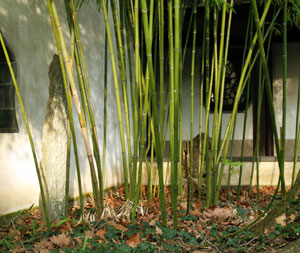

Like all grasses, bamboo grows most lushly when supplied with ample moisture. Plant it in rich, well-drained soil in a sunny or partly shaded location. Edible Bamboo Growing Conditionsīamboo, which is essentially a giant grass, is very easy to grow. 5 inches) and Fargesia robusta (0 degrees 1 inch). While this group is not generally known for its culinary qualities, at least two species are sometimes consumed: Fargesia spathacea (-10 degrees. The most cold-hardy bamboo species are found in the genus Fargesia, which includes varieties that are hardy down to -20 degrees. 5-1.5 inches), Chimonocalamus delicatus (10 degrees 1.5 inches), and Gigantochloa levis (30 degrees 6 inches). The company looked at 110 species, designating 33 as “delicious.” In addition to many in the Phyllostachys genus, these include (with their respective cold tolerance and cane diameter indicated): Acidosasa edulis (5 degrees 2.5 inches) most species in the genus Chimonobambusa (varies, but most hardy to around 15 degrees. Hardy to 0 degrees Fahrenheit.įor a comprehensive look at the culinary qualities of various bamboo species, check the list compiled by the Guadua Bamboo company. Sweetshoot Bamboo ( Phyllostachys dulcis ) : Another popular variety in the Asian bamboo shoot industry, this species reaches about 40 feet in height, with 3-inch diameter canes. It is widely available in American nurseries. Moso Bamboo ( Phyllostachys edulis ) : Eventually reaching a height of 50 feet or more, with canes up to 8 inches in diameter, this species is grown commercially in Asia for both food and construction material. Two of these are known for their exceptionally tasty shoots: Bamboo species have varying degrees of cold tolerance, so your choice will also be a function of climatic constraints.īamboo varieties from the genus Phyllostachys, which are generally cold hardy and produce good quality shoots, are widely considered the best choice for American gardeners. Size doesn’t correspond to flavor, though the larger the diameter of the aboveground canes, the larger the shoots, and thus the bigger the harvest. If you’re going to plant bamboo specifically for food, choose the species with the most tender, tastiest, and abundant shoots. If you already have bamboo growing on your property, simply follow the instructions below to harvest and prepare the shoots to see if they are worth eating or not (all bamboo shoots should be cooked prior to consumption, as this neutralizes toxins that occur in some species). Many species produce scant quantities of small, tough, bitter shoots, which must be cooked for a long time to become even somewhat palatable. Some are much tastier and more productive than others, however. There are hundreds of species of bamboo, all of which are potentially edible. The edible portions of a bamboo plant are the tender shoots that have just emerged, asparagus-like, from the ground in spring.


 0 kommentar(er)
0 kommentar(er)
